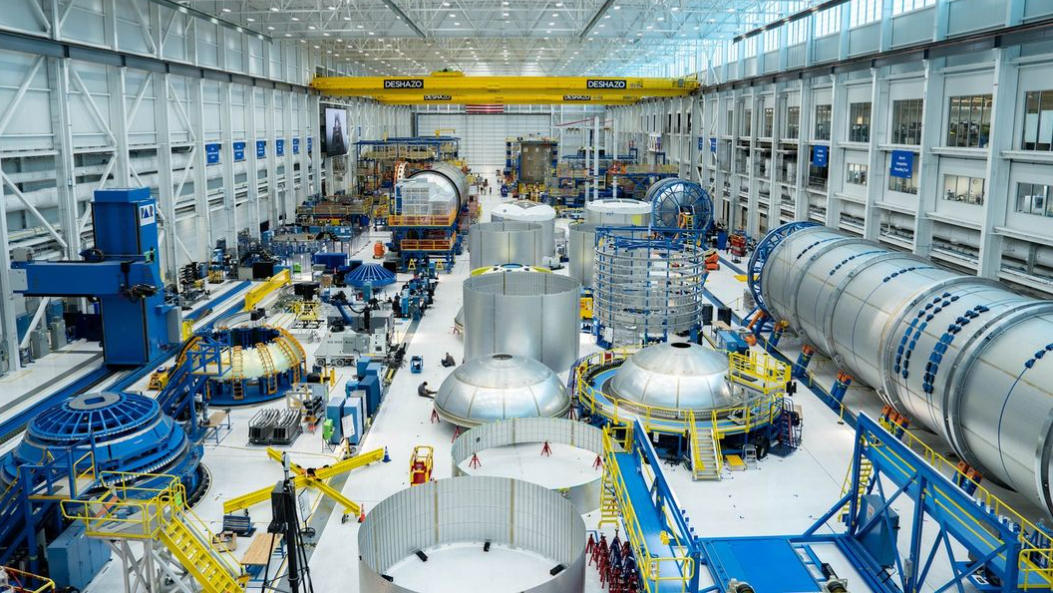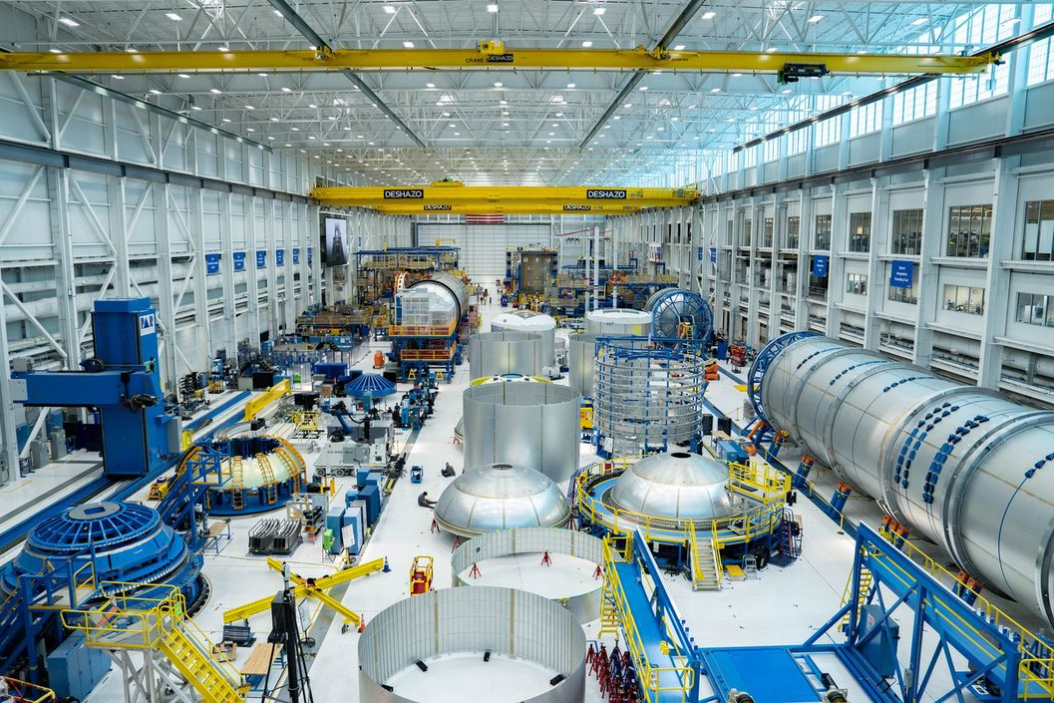See Blue Origin's New Glenn rocket come together at Florida space coast factory (photo)
Social media post provides rare insight into work on New Glenn

Blue Origin has provided a rare look inside their factory at NASA's Kennedy Space Center (KSC) showing hardware for its new orbital rocket.
The image shared on Instagram shows rocket stage and interstage components and propellant tank domes for the New Glenn rocket on the factory floor in Florida. The post provided no details, so it is not known if the image shows test articles or potential flight hardware.
New Glenn has been in development for years and, after numerous delays, may fly for the first time next year. The rare glimpse at rocket hardware suggests Blue Origin is confident about the progress it is making towards a test launch.
Related: Blue Origin's BE-4 rocket engine exploded during June 30 test: report
The two-stage rocket will be 322 feet tall (98 meters) long and able to lift 14 tons (13 metric tons) to geostationary transfer orbit, and 50 tons (45 metric tons) to low Earth orbit.
The first stage will be powered by seven BE-4 engines. Blue Origin is also building BE-4s for United Launch Alliance's Vulcan launch vehicle.
New Glenn will have a reusable first stage and is seen as a potential alternative and competitor to SpaceX’s industry-dominating Falcon 9 rocket.
Get the Space.com Newsletter
Breaking space news, the latest updates on rocket launches, skywatching events and more!

Blue Origin has a long-term lease for Launch Complex 36 at the Cape Canaveral Space Force Station in Florida for New Glenn launches, close to the production factory.
NASA has signed up New Glenn to its fleet of commercial launchers and the rocket could be used for crewed lunar missions. Blue Origin will build a second moon lander for NASA's Artemis astronauts, adding another option alongside SpaceX’s Starship which was selected in 2021.
Join our Space Forums to keep talking space on the latest missions, night sky and more! And if you have a news tip, correction or comment, let us know at: community@space.com.

Andrew is a freelance space journalist with a focus on reporting on China's rapidly growing space sector. He began writing for Space.com in 2019 and writes for SpaceNews, IEEE Spectrum, National Geographic, Sky & Telescope, New Scientist and others. Andrew first caught the space bug when, as a youngster, he saw Voyager images of other worlds in our solar system for the first time. Away from space, Andrew enjoys trail running in the forests of Finland. You can follow him on Twitter @AJ_FI.
-
monkeyonmars I hope all the pieces are there and that they fit together. When you don't do RID, you never know till the first time you put it together.Reply









